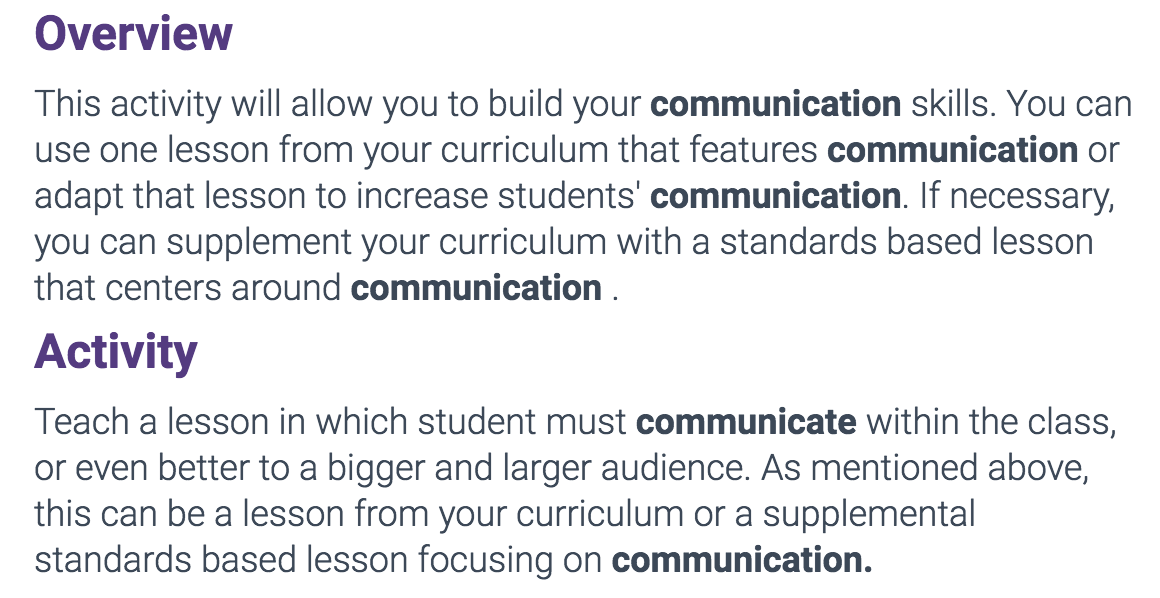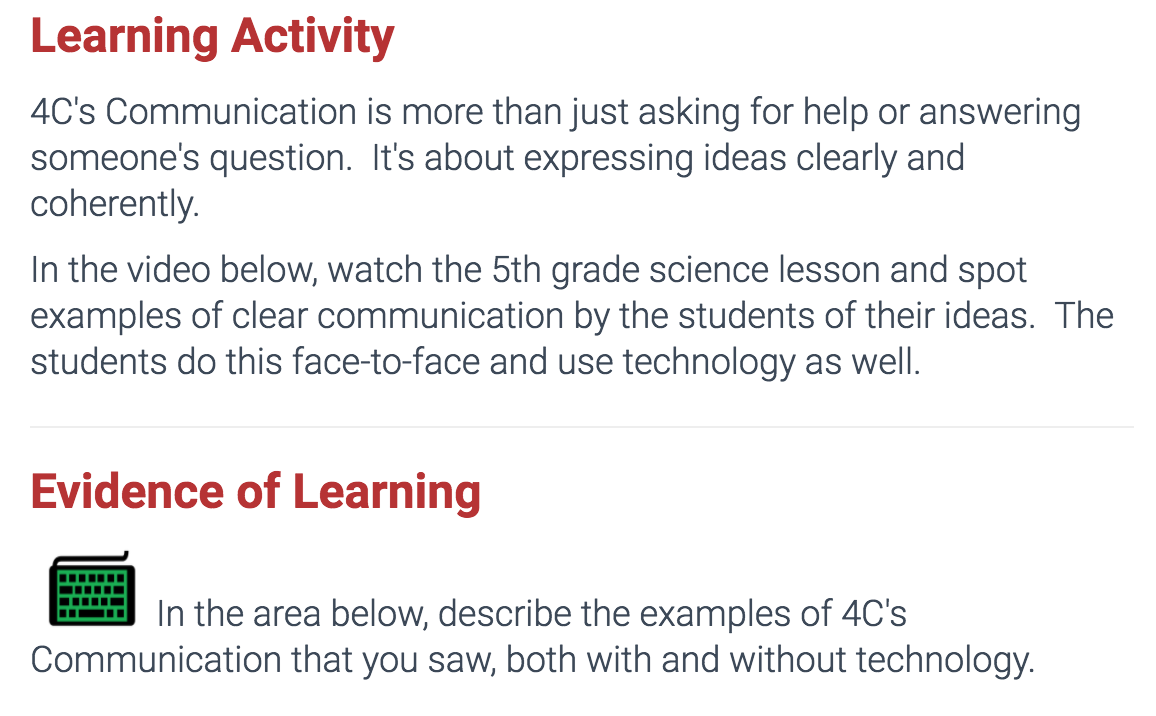Quick Tip Wednesday: How to Set Up a Gratitude Month
Welcome back to Quick Tip Wednesday!
Imagine all of the different ways people communicate: conversation, e-mail, text messaging. Video conferencing and phone calls; through books, art or dance. The list is endless (smoke signals, Morse code...), and it's likely that you use at least three of these different methods on a daily basis.
People need to communicate for work and education, to build relationships. To gather new information. To shop, to volunteer -- to live. It's a skill that's at the core of almost everything we do.
But communicating effectively isn't always simple. Asking for directions is one thing -- but communicating to run a business or teach a class is a whole different animal. Being an effective communicator takes time and practice: it's a skill that can be taught and learned. And it's one of the 4C's of education.
So, how are educators incorporating communication into their curricula? In Virginia Beach City Public Schools, teachers encourage students to formulate thoughtful questions, listen actively, and respect the ideas and opinions of others.
Every class in any subject provides an opportunity to foster communication skills. English class? A bigger vocabulary is part of a student's communication toolkit. Art class? Visual communication is key in our multimedia world. History, science, or math? Giving presentations or working together to solve a problem builds communication skills. Communication doesn't have to be it's own lesson, or an afterthought. It can be built into the core of a curriculum by giving students an opportunity to work together -- to collaborate.
Many Alludo districts are embracing communication in the classroom. Teachers explore online communication, communication with parents, and what it means to communicate in general. Check out some of these exciting activities available in the Alludo catalog.
 Alisal Union School District, Communication Lesson
Alisal Union School District, Communication Lesson
 Campbell Union School District, Explore Communication lesson
Campbell Union School District, Explore Communication lesson
Image attribution
[Image 1]
.png)
Welcome back to Quick Tip Wednesday!

Mid-Year Reflection: Your Secret to a Stronger Second Semester
A great way to get your learners engaged in your Alludo program is by keeping the content in your program up-to-date and relevant. Rebecca has...